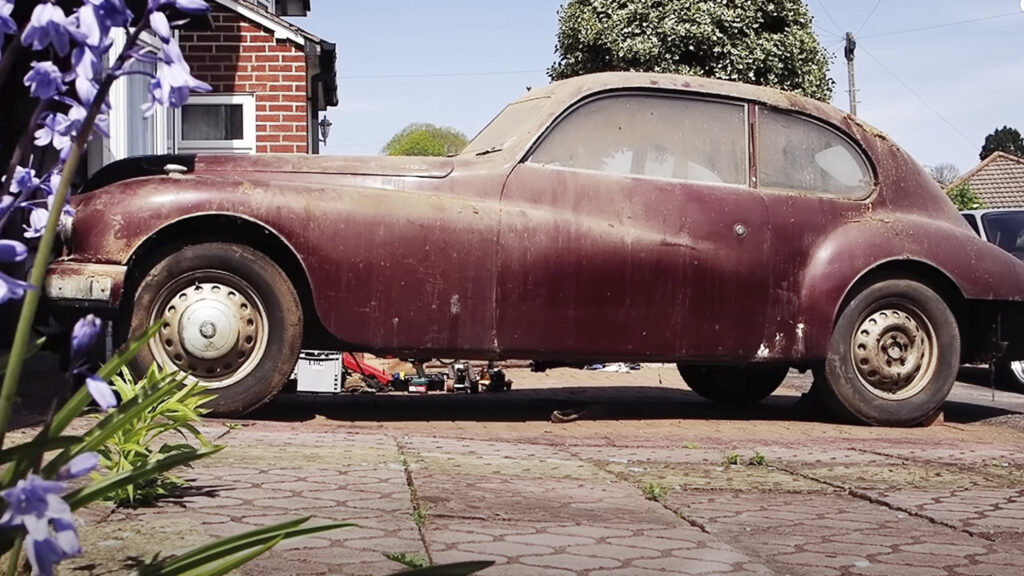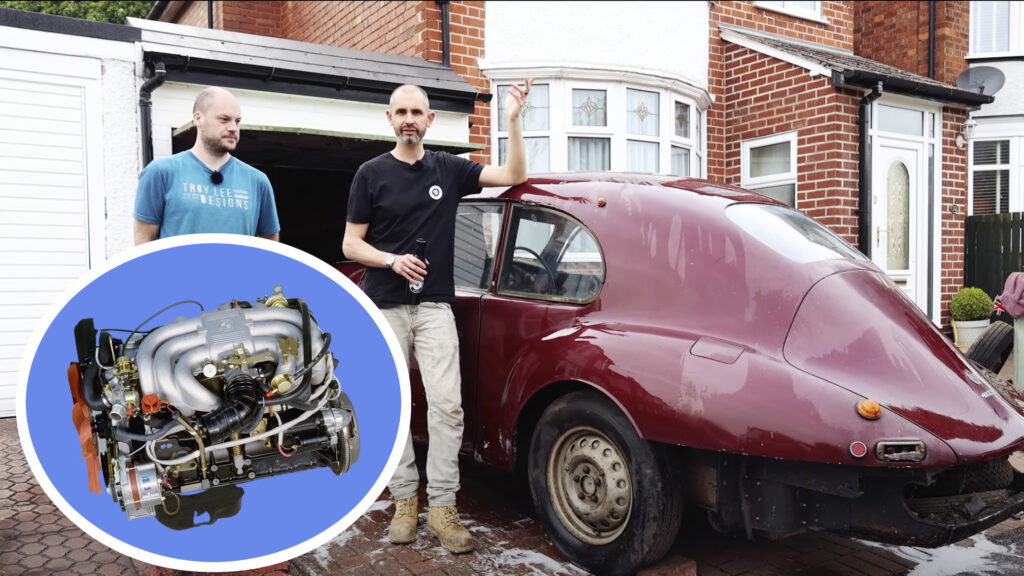Engine swaps for classics are a bit of a contentious subject, to say the least. And the rarer the car, the more the case to keep it original is made. So, for a vehicle produced in numbers fewer than 300, the mere murmur of “drivetrain transplant” would typically be enough to send hordes of purists into fits of rage. But in the case of this Bristol 403, garaged since 1979, keeping the original lump may be out of the question.
As part of The Late Brake Show’s Barn Finds series, Jonny Smith meets David, whose uncle owned a two-owner 1954 Bristol 403 with just 26,000 miles on the clock until he passed away nine years ago. Being housed in the same garage for the past 44 years, the exterior bodywork of the lesser-known British classic is in remarkable condition, save for some unpainted accident repair work on the driver’s side rear fender.
In addition to being kept away from the elements, one of the reasons that the Bristol has managed to stay in such good nick over the years is that the body is hand-pressed out of aluminum. This lightweight and durable approach to construction was thanks to the company’s aviation heritage. Other elements include the extremely aerodynamic, sweptback design of the body, a bank of Smith’s gauges, and a yoke-like design applied to the steering wheel.
Related: Someone Left A 1982 Audi Quattro Turbo To Rot In A Barn For Nearly 30 Years
With only 287 examples of the 403 produced between 1953 and 1955, the newly rediscovered Bristol can already be considered rather unique. The bodywork cleans up remarkably after a quick blast with a pressure washer, revealing a deep burgundy shade that had been masked by decades of dust.
But for new custodian David, there’s already one problem with getting the project running: the engine. Before the car was taken off the road, the Bristol’s engine had been dismantled for reasons that weren’t entirely apparent. In a follow-up comment posted by David, the prognosis for the original powerplant is rather bleak. The rods and pistons are toast, and according to a workshop, the crank is badly scored. In addition, the block has had a crack repaired previously, with the engine having led “a bloody hard life before it was even removed.”
With the costs of re-manufacturing a crank and block alone costing close to £20,000 (approximately $25,500 at current exchange rates), David is being forced to consider swapping in an entirely different engine. Originally sporting a BMW-derived 2.0-liter straight six with a hemispherical head, these engines were highly desirable for use in motorsport — hence, many Bristols were cannibalized for their innards, making the motors a rare commodity nowadays.
Also Read: Bristol Cars Resurrected, Will Offer Limited Run Of Continuation Models Before Becoming EV-Only

Perhaps the best way forward would be to chuck in a more common BMW M20 engine that saw service in Bavarian saloon car products throughout the 70s and 80s. This could be seen as a compromise, retaining the character of the original while utilizing an engine that is more commonly available. Another option being considered is sourcing a V8, in line with what was employed in later Bristols. Meanwhile, commenters have all manner of suggestions, from plumbing in a Ford side-valve V8 to the straight-six from a Triumph 2000. Some even suggest an EV conversion may be the best way to go.
So, what would you do in such a situation? Spend roughly half of what a complete car would be worth on re-manufacturing components for the original engine? Source a more modern BMW 2.0-liter straight six, and perhaps convert it to run carbs to mimic the spirit of the original? Or do something else entirely? Let us know in the comments below.








